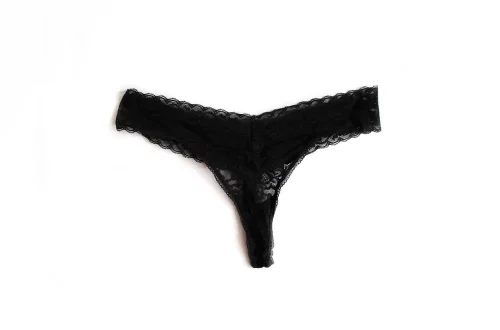
Real vs Fake Boobs: Understanding the Differences and Impacts
The topic of breast enhancement, whether through surgical means or natural development, has long been a subject of fascination and discussion. In a society where appearance often influences self-esteem and personal identity, the decision to opt for breast augmentation or to embrace natural breasts is laden with emotional and psychological implications. Factors such as societal norms, celebrity influence, and personal choice play a significant role in shaping opinions about the ideal body image.
Moreover, the conversation surrounding real versus fake breasts delves into more than just aesthetics; it also touches upon health, safety, and individual empowerment. As women navigate their choices, they often confront diverse perspectives from friends, family, and media, leading to a complex web of influences that can affect their decisions. Understanding these factors is crucial in fostering a supportive environment, where women can feel confident in their choices, irrespective of societal pressures.
In this exploration, we will examine the differences between natural and augmented breasts, their implications on self-image and health, and the broader societal perceptions that accompany these choices.
Physical Differences: Anatomy and Aesthetics
When discussing the physical differences between natural and augmented breasts, it is essential to consider both anatomy and aesthetics. Natural breasts are composed primarily of glandular and adipose tissue, resulting in a unique shape and feel that varies considerably from person to person. Factors such as genetics, age, and body composition all influence breast size and shape. Natural breasts may change over time due to hormonal fluctuations, pregnancy, and aging, leading to variations in firmness and volume.
In contrast, augmented breasts are typically enhanced using silicone or saline implants, which can provide a more uniform shape and size. These implants come in various shapes and profiles, allowing for customization to achieve specific aesthetic goals. While surgical enhancements can lead to a fuller appearance, they may also lack the natural movement and softness of real breasts. The tactile difference is often noticeable; augmented breasts may feel firmer and less organic compared to their natural counterparts.
Furthermore, the surgical process introduces additional considerations, such as the potential for complications, recovery times, and the need for future maintenance. Implants may require replacement after a certain period, which adds an ongoing commitment to the decision. Additionally, women with implants may experience changes in sensitivity and breastfeeding challenges, which can impact their overall experience of motherhood.
The choice between real and fake breasts ultimately comes down to personal preference and individual circumstances. Some women may prioritize aesthetic goals and choose augmentation, while others may prefer to embrace their natural bodies. Understanding these physical differences can empower women to make informed decisions that align with their values and lifestyles.
Psychological Impacts: Self-Image and Confidence
The psychological impacts of choosing between natural and augmented breasts are profound and multifaceted. For many women, breasts symbolize femininity and sexuality, leading to a strong emotional connection to their appearance. The decision to undergo breast augmentation can stem from a desire to enhance self-esteem, improve body image, or achieve a specific look that aligns with personal ideals.
Women who opt for augmentation often report increased confidence and satisfaction with their bodies, particularly if they had previously experienced insecurities about breast size. The act of enhancing one’s appearance can serve as a transformative experience, allowing women to feel more empowered in their bodies. However, it is crucial to address the potential for unrealistic expectations, as media portrayals of idealized bodies can create pressure to conform to certain standards.
On the other hand, women who choose to embrace their natural breasts may find empowerment in rejecting societal norms that equate worth with appearance. This decision can reflect a commitment to authenticity and self-acceptance, fostering a positive self-image rooted in self-love rather than external validation. However, societal judgments and stigma can still pose challenges, as women with smaller breasts may face scrutiny or unsolicited opinions about their bodies.
The psychological journey associated with these choices can also be influenced by cultural factors, peer support, and personal experiences. Ultimately, fostering a healthy self-image, regardless of breast size, involves recognizing the value of individuality and celebrating diverse body types. Encouraging open discussions about body positivity can help create an environment where women feel validated in their choices, whether they opt for augmentation or embrace their natural selves.
Health Considerations: Safety and Risks
When contemplating breast augmentation, understanding the health considerations associated with the procedure is crucial. While many women successfully undergo breast implant surgery with satisfactory results, it is essential to recognize the potential risks involved. Common complications can include infection, implant rupture, and capsular contracture, where scar tissue forms around the implant, leading to discomfort or altered appearance.
Additionally, the long-term effects of breast implants remain a topic of ongoing research. Some studies suggest potential links between breast implants and autoimmune disorders, although the evidence is not definitive. Women may also experience changes in breast tissue density, which can complicate mammogram screenings and early detection of breast cancer. These factors underscore the importance of regular follow-up appointments with healthcare providers for those who choose augmentation.
Conversely, natural breasts typically do not pose the same risks associated with surgical enhancements. However, women with larger breasts may encounter their own set of health challenges, such as back pain, neck strain, and skin irritation. These concerns often lead to discussions about breast reduction surgery, which can alleviate physical discomfort.
Regardless of the choice made, it is essential for women to prioritize their health and well-being. Regular self-examinations, screenings, and consultations with healthcare professionals can help ensure that any potential issues are addressed promptly. Ultimately, informed decision-making, coupled with a strong support system, can empower women to navigate their choices regarding breast health and aesthetics.
Societal Norms: Perceptions and Influences
The societal norms surrounding breast size and appearance have evolved significantly over the years, influenced by culture, media, and celebrity trends. In many societies, larger breasts have been historically associated with femininity and desirability, leading to a perception that women with augmented breasts are more attractive. This narrative is often perpetuated by popular media, which frequently showcases idealized body types that can skew public perceptions of beauty.
However, the tide is shifting as movements advocating for body positivity and diversity gain momentum. Many women are now challenging conventional beauty standards, embracing body diversity and promoting self-acceptance regardless of breast size. Social media platforms play a crucial role in this change, offering a space for individuals to share their experiences and celebrate their bodies, whether augmented or natural.
The influence of celebrity culture cannot be overlooked in this context. High-profile figures often set trends, and their choices—whether to undergo augmentation or embrace natural beauty—can significantly impact public opinion. While some celebrities openly discuss their experiences with breast implants, others advocate for natural beauty, creating a dichotomy that influences how women perceive their own bodies.
Despite these evolving narratives, societal judgments and expectations continue to exert pressure on women. The stigma surrounding breast size—whether too small or too large—can affect self-esteem and body image. It is essential to foster conversations that challenge these norms and promote a broader understanding of beauty that celebrates individuality.
In conclusion, the conversation surrounding real versus fake breasts is complex, encompassing physical differences, psychological impacts, health considerations, and societal perceptions. Empowering women to make informed choices about their bodies involves understanding these multifaceted aspects and fostering a supportive environment that values diversity and authenticity.
*Disclaimer: This article is for informational purposes only and should not be considered medical advice. For any health-related concerns or conditions, please consult a qualified healthcare professional.*




